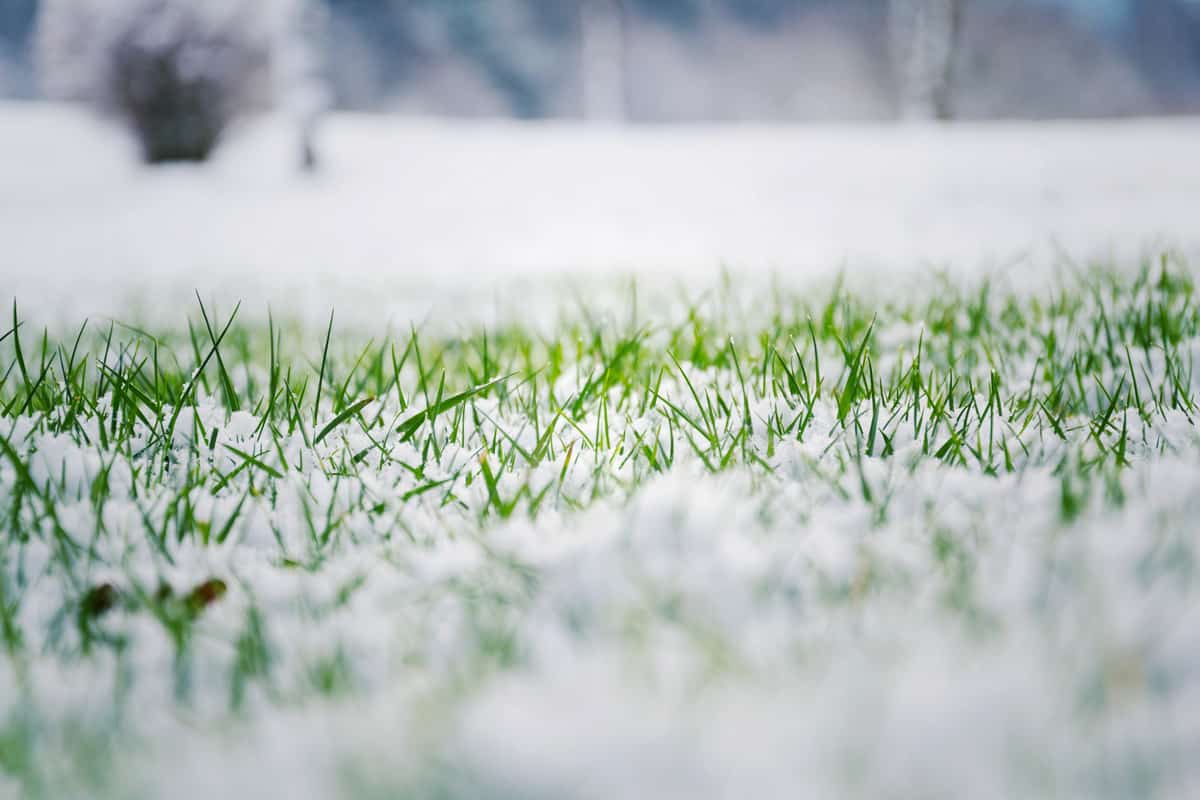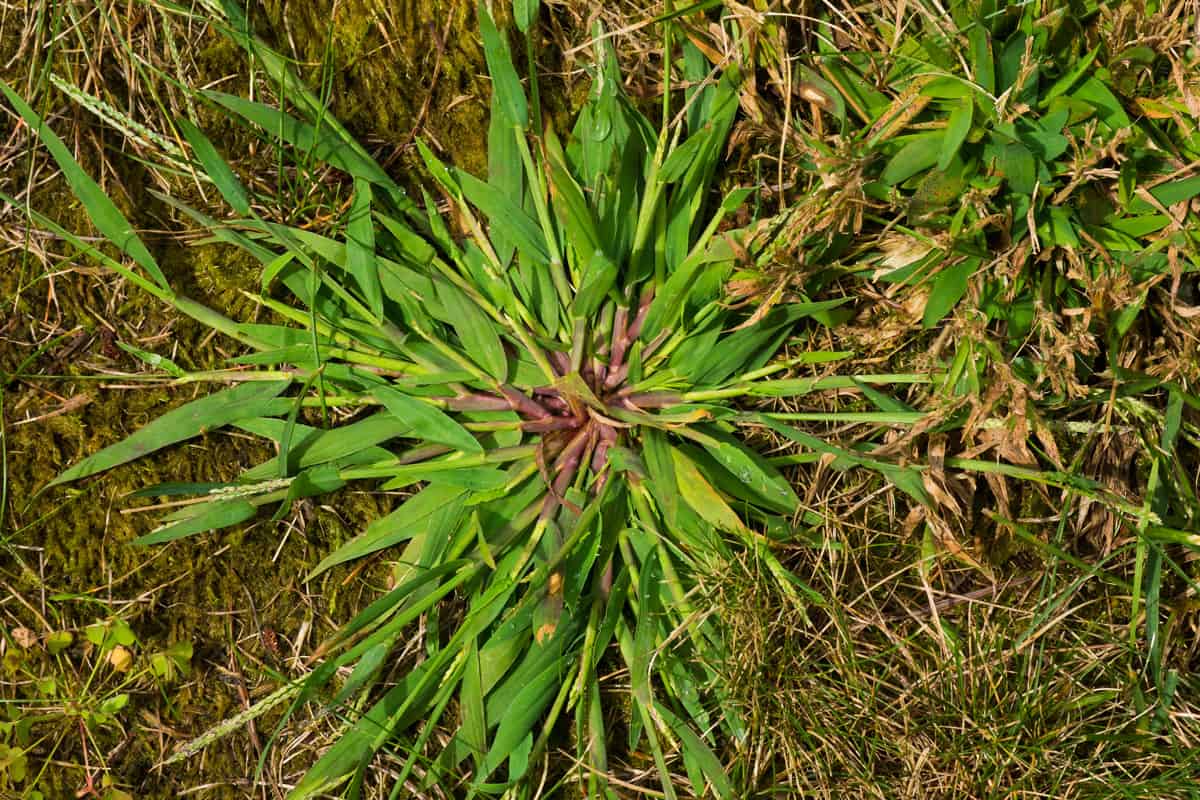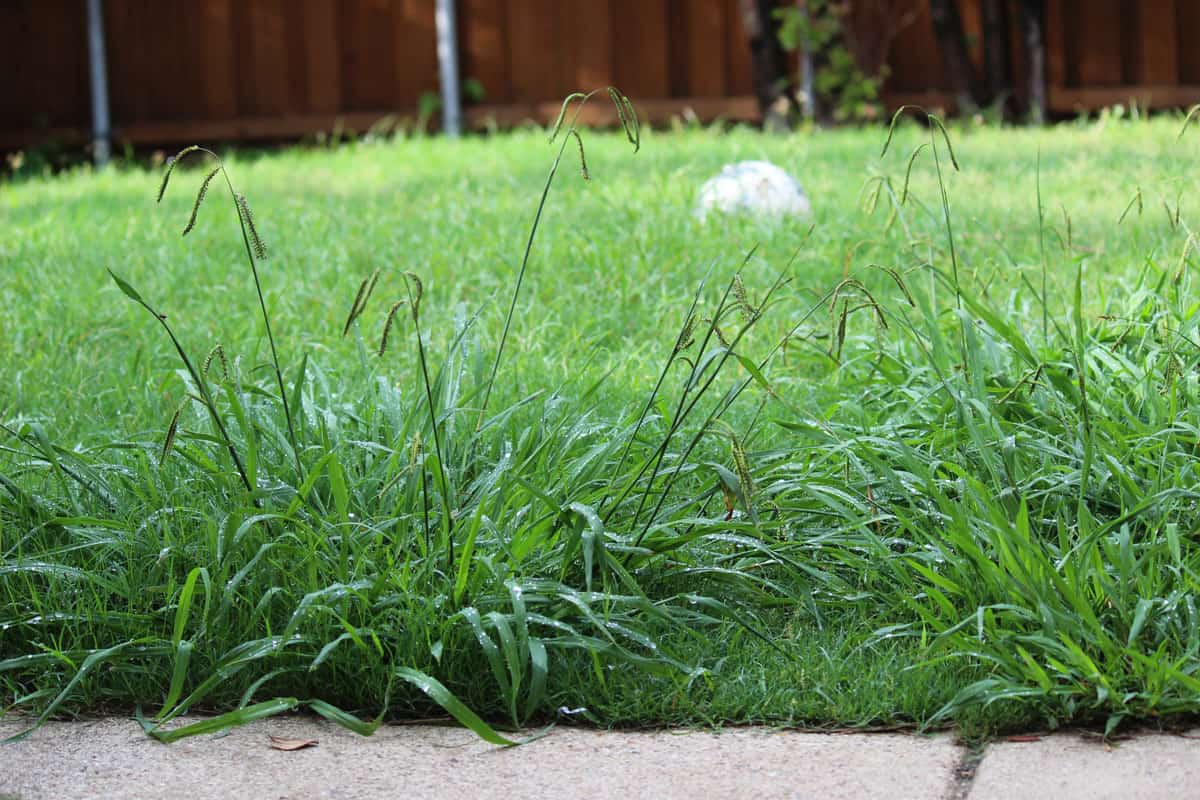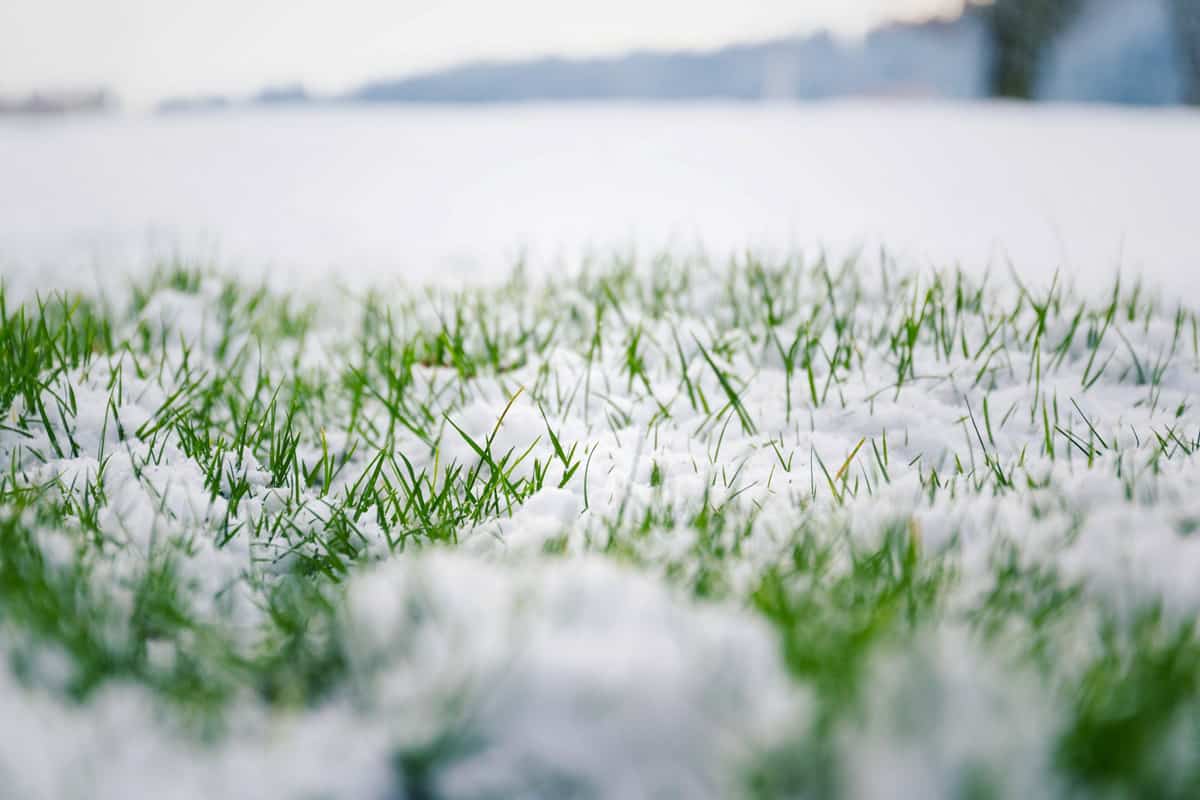Finding new plants growing in your garden can sometimes be confusing. For example, did you recently start seeing crabgrass pop up and aren't sure what to do about it? Since this species is a weed, does that mean it will die in the winter? Or can crabgrass survive year-round?
Luckily, we've done plenty of searching and have the answer.
Most often, crabgrass will die in the winter. Since this grass weed is better suited for tropical locations, colder temperatures will stunt and kill it. By the end of winter, any existing crabgrass you had should shrivel up and die.
However, crabgrass is known to re-seed, meaning there will be new grass next spring if you don't treat the soil. Although the parent plant dies in the cold, the seeds go dormant and emerge when the spring weather kicks in.
As we start this article, we will cover crabgrass and discuss whether it dies in the winter. Whether you're used to having crabgrass fill your yard or recently caught it emerging, we're here to offer some help. With that said, let's dive right into this topic below!

Will Crabgrass Die In The Winter?
Yes! Most of the time, crabgrass will shrivel up and die as the weather gets cold. Because this grass species is tropical-leaning, cooler conditions aren't good for it.
Generally, during the wintertime, crabgrass will begin to slow down, lose its color, and die back into the soil. This is normal for annual plants, another category you can expect crabgrass to fall into.
The annual weed grass will usually begin growing in your garden during the early summer (usually in June) when soil temperatures rise to 50 degrees Fahrenheit.
Therefore, once the soil temperatures fall below 50 degrees in winter, you can expect fewer crabgrass clumps to grow across your lawn or garden.
Lower USDA zones will see their crabgrass die earlier than people in warmer, tropical regions. For example, a Florida garden may experience crabgrass until January or February, while someone in Utah will have theirs die in November or December.
So, if you can't seem to kill the crabgrass in your yard, winter should be able to handle it instead.

At What Temperature Does Crabgrass Die?
Typically, you can expect crabgrass to die once the average nightly temperatures reach 32 degrees or lower. As mentioned above, the ground temperature needs to be 50 degrees for crabgrass to begin growing, so it will also need to drop below that for your weed to start dying.
Even if the daytime weather is 50 degrees or higher, nightly conditions in the lower 30s are when crabgrass can no longer sustain itself.
For most gardens, this will begin happening in November or December. It's also worth noting that crabgrass seeds germinate once the soil becomes 55 degrees Fahrenheit.
Therefore, you want to monitor your garden closely through the fall and winter to ensure the ground isn't warm enough to continue hosting these weeds.
Again, crabgrass is annual, so it won't usually survive through winter and won't continue growing in the spring. Snow and frost can also speed up the killing process, so keep your fingers crossed.
Can Crabgrass Survive Frost?
No. Most times, crabgrass cannot survive frost. Since frost typically happens when the temperatures fall to 32 degrees or lower, your crabgrass won't be able to push through it.
Instead, when the first frost comes to your garden, you can expect annual plants and weeds to begin dying. Unlike perennials, your crabgrass will die—not become dormant.
This weed species is typically found in lawns, so the first frost is a great time for many gardeners. Weeds, especially crabgrass, can be tricky to navigate, so the first and subsequent frosts are nature's weed killers.
On top of that, once the snow begins to fall, as well as regular ice, the ground will become unlivable for warmer-leaning species. If your garden doesn't have snow, that's when crabgrass will live a bit longer.
Luckily, regardless of location within the US, the ground should become lower than 50 degrees into December, January, or February, which will kill off any remaining crabgrass.
Do Crabgrass Seeds Go Dormant In The Winter?

Unfortunately, the seeds from existing crabgrass plants will remain dormant in the soil through winter. Unlike the host plant that dies entirely, its seeds can push through the cold and germinate once ground temperatures rise to 55 degrees.
Between the mid-summer and early fall, crabgrass plants produce nearly thousands of seeds, dispersing them into the nearby soil. As this happens, your garden becomes the host for new weeds to emerge next spring and summer.
That is one of the reasons getting rid of crabgrass permanently is so challenging. Even if the winter is extreme, with nightly temperatures below or near freezing, the crabgrass seeds can usually survive.
This is similar to perennials, which do the same through harsher winter weather. If you're worried about ned crabgrass emerging as spring and summer arrive, it could be worth using an herbicide targeted towards crabgrasses.
With weeds, you need to also target the surrounding ground since seeds will be present.
Will Crabgrass Survive Winter In Warmer USDA Zones?

If you live in a warmer USDA zone, your crabgrass can grow more as a perennial. Generally, places with winter weather that doesn't drop below 40-50 degrees will experience more persistent weeds.
That said, you shouldn't expect crabgrass to live more than one year, as it isn't equipped to continue maturing and producing seeds. Like most annuals, your crabgrass has a short lifespan, whether it's chilly or not.
As we mentioned, crabgrass leaves seeds behind in the summer and fall, which become dormant in winter. If the ground continues to be 55+ degrees, these new seedlings could emerge and grow.
So, in a way, your crabgrass could live through the year, although new plants will grow and die within the same area. Remember, crabgrass thrives in warm weather, so if the conditions where you are fall into a tropical category, you'll need to use a targeted product on the soil.
Where Does Crabgrass Usually Grow?
Crabgrass generally grows in lawns and landscaping. Since this weed resembles regular grass, many people don't realize they have it.
Lawns, golf courses, sports fields, gardens, orchards, and waste hosting locations are all top contenders for the most crabgrass. Like many weed species, crabgrass has no problem squeezing into existing landscapes.
That can become a problem for those with manicured lawns, as crabgrass tends to grow in clumps and cause patchiness in your grass. Luckily, crabgrass only spreads through seeds and not rhizomes.
Therefore, if you can treat the section of land that has seeds and weeds growing, then you should be able to eradicate it. A targeted herbicide that's safe for lawns is what we recommend trying.
It's also worth mentioning that crabgrass seeds emerge in the spring and summer. So, if you can treat the soil right after the last winter frost, you should be able to kill off any remaining seeds. Weed prevention and management can be tedious, but it is possible.
What Is The Best Way To Kill Crabgrass?
When it comes to the best way to kill crabgrass, you want to use a targeted herbicide throughout your garden. As we said, finding a product that won't kill the surrounding lawn/vegetation is a good idea, so the formula is crucial.
Although some fast-acting weed killers work wonders for crabgrass, they might also kill the plants nearby. According to experts, you want to use a selective post-emergent herbicide on crabgrass that is already sprouting.
Doing this will kill the weeds in your landscape but not the surrounding grass and plants. With that said, if the crabgrass grows somewhere without nearby plants or grass, you can use a product with glyphosate.
Roundup works wonders for killing all types of weeds and plants, as it features glyphosate as its main active ingredient. Therefore, you can expect it to get rid of anything it touches, whether it's crabgrass or something else.
For targeted products to only kill crabgrass, we recommend shopping through Scotts. Luckily, this brand makes pre and post-emergent weed killers that target crabgrass while protecting your nearby grass and landscape.
Scotts Halts Crabgrass & Grassy Weed Preventer
This herbicide prevents crabgrass, covers up to 10,000 square feet, works for the entire season, should go onto the soil in spring, works for other grassy weeds, and comes in a 20-pound bag.
View this weed killer on Amazon.
Why Does My Crabgrass Keep Coming Back?

One of the main reasons that crabgrass will continue growing in your yard is that it produces seeds before each winter. As we said, crabgrass doesn't multiply by rhizomes but through re-seeding.
Therefore, if you depend on the cold winter weather to manage your crabgrass, that will only work for actively growing plants.
The seeds from your crabgrass remain dormant during winter, eventually sprouting in the spring. That makes applying a targeted pre-emergent herbicide crucial to keeping these weeds at bay.
It's also worth noting that some crabgrass seeds won't germinate immediately, often remaining viable for years. So, just because you don't see crabgrass growing doesn't mean it isn't there.
To Finish It All Up

Whether you're struggling with crabgrass or recently noticed one pop up in your landscape, it's always good to know their growing pattern. We found that crabgrass will die in the winter when the ground becomes colder than 50 degrees.
In addition, frost and snow kill crabgrass, so once the first one of the season hits, you can expect the grass to begin dying. Crabgrass is annual, but in warmer climates, you might notice seeds sprout throughout the year, giving the effect of endless crabgrass.
We recommend a selective pre- or post-emergent herbicide to clear the above and underground crabgrass. Good luck!
You might also be interested in these garden articles:
Does Roundup Kill Crabgrass & Crabgrass Seeds?

